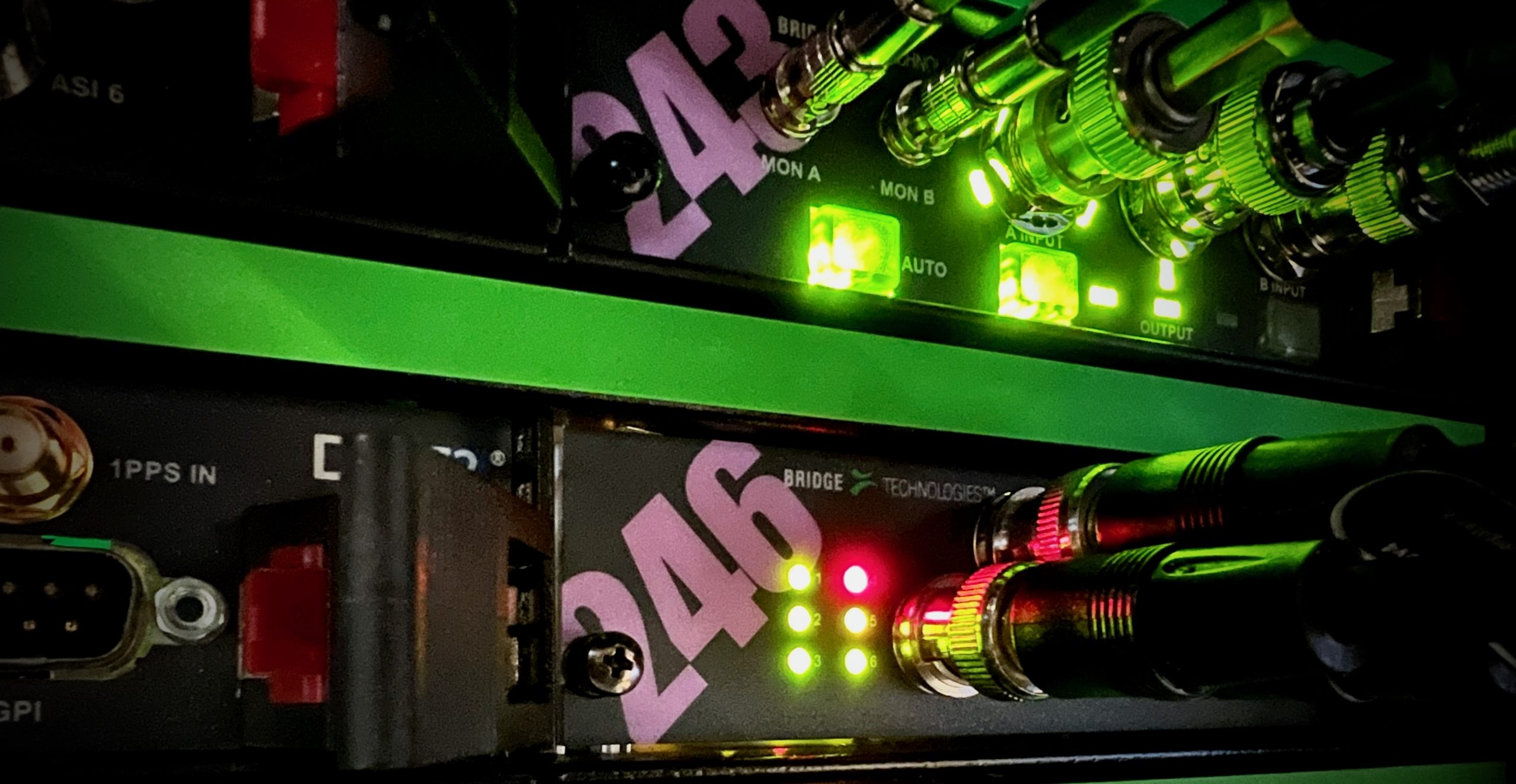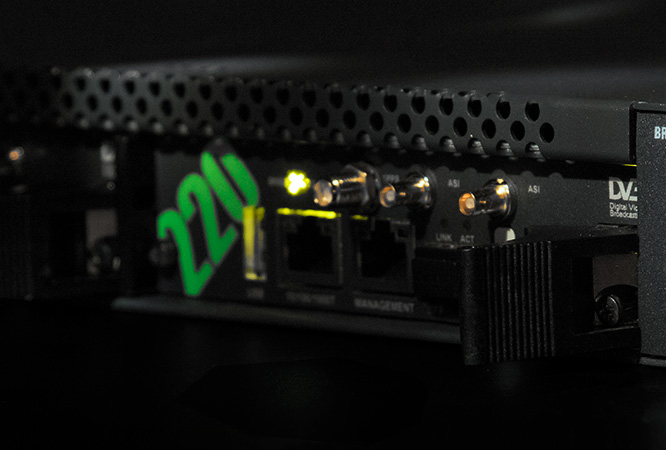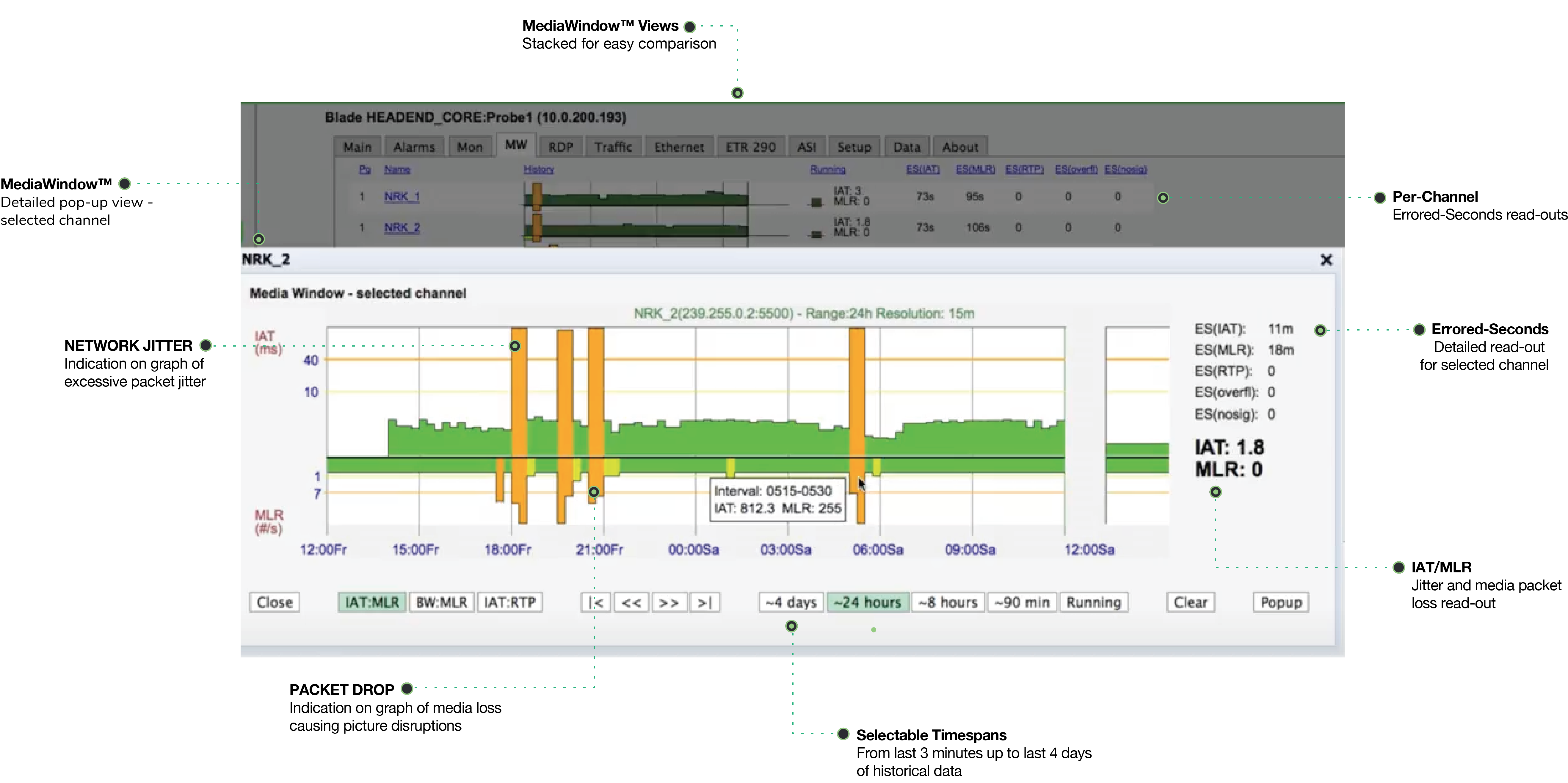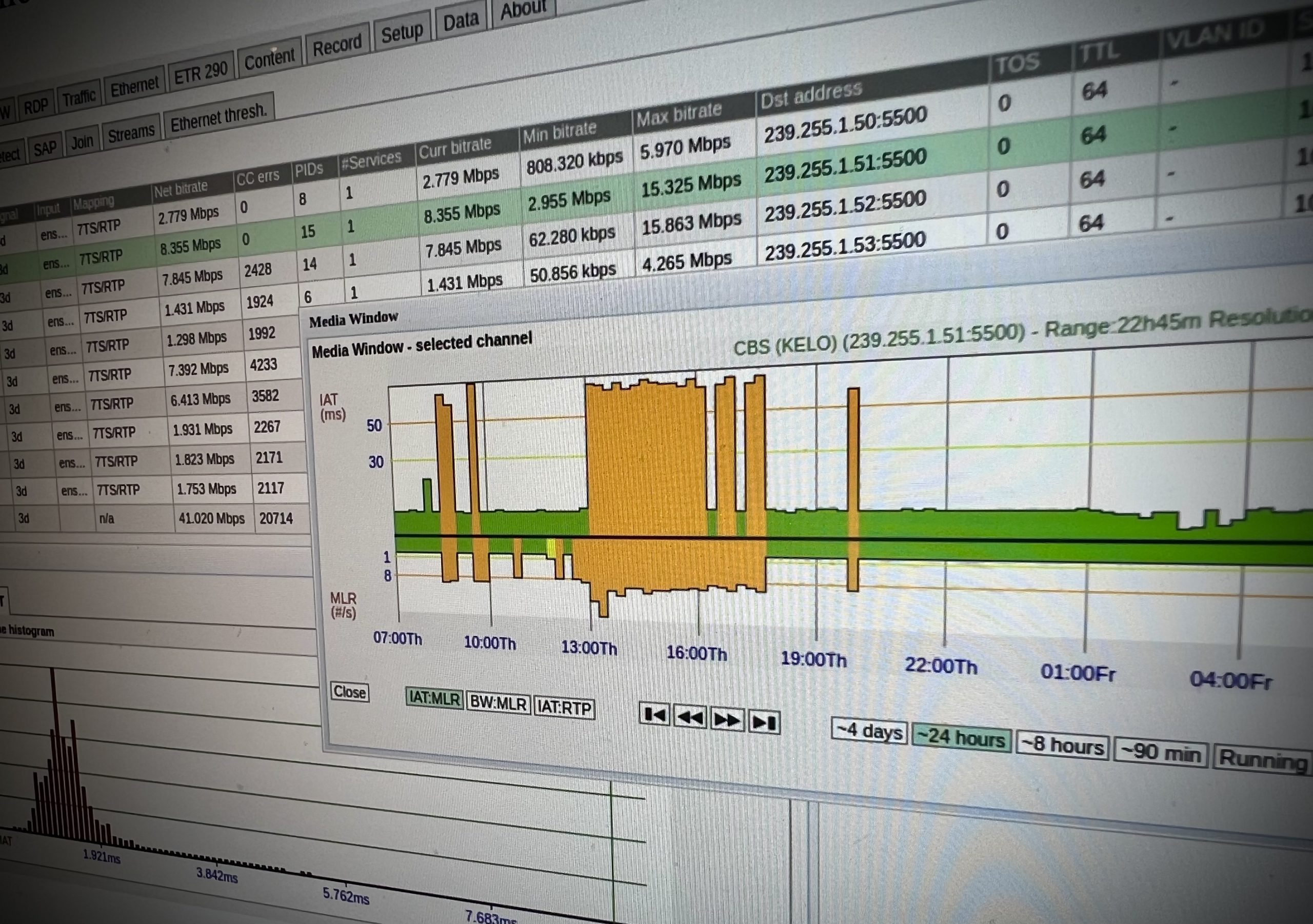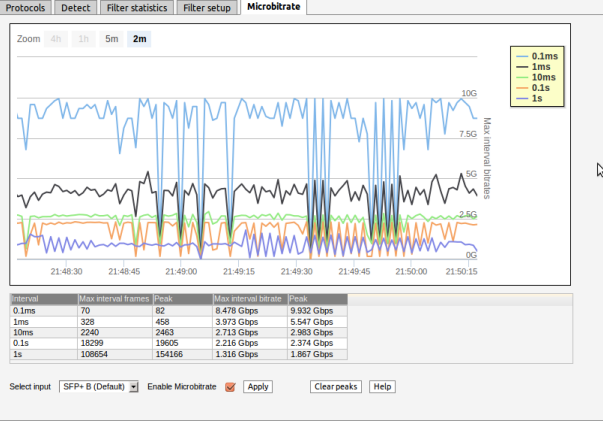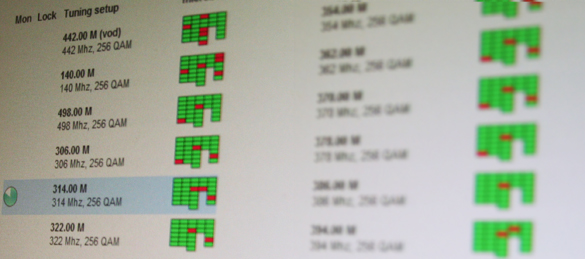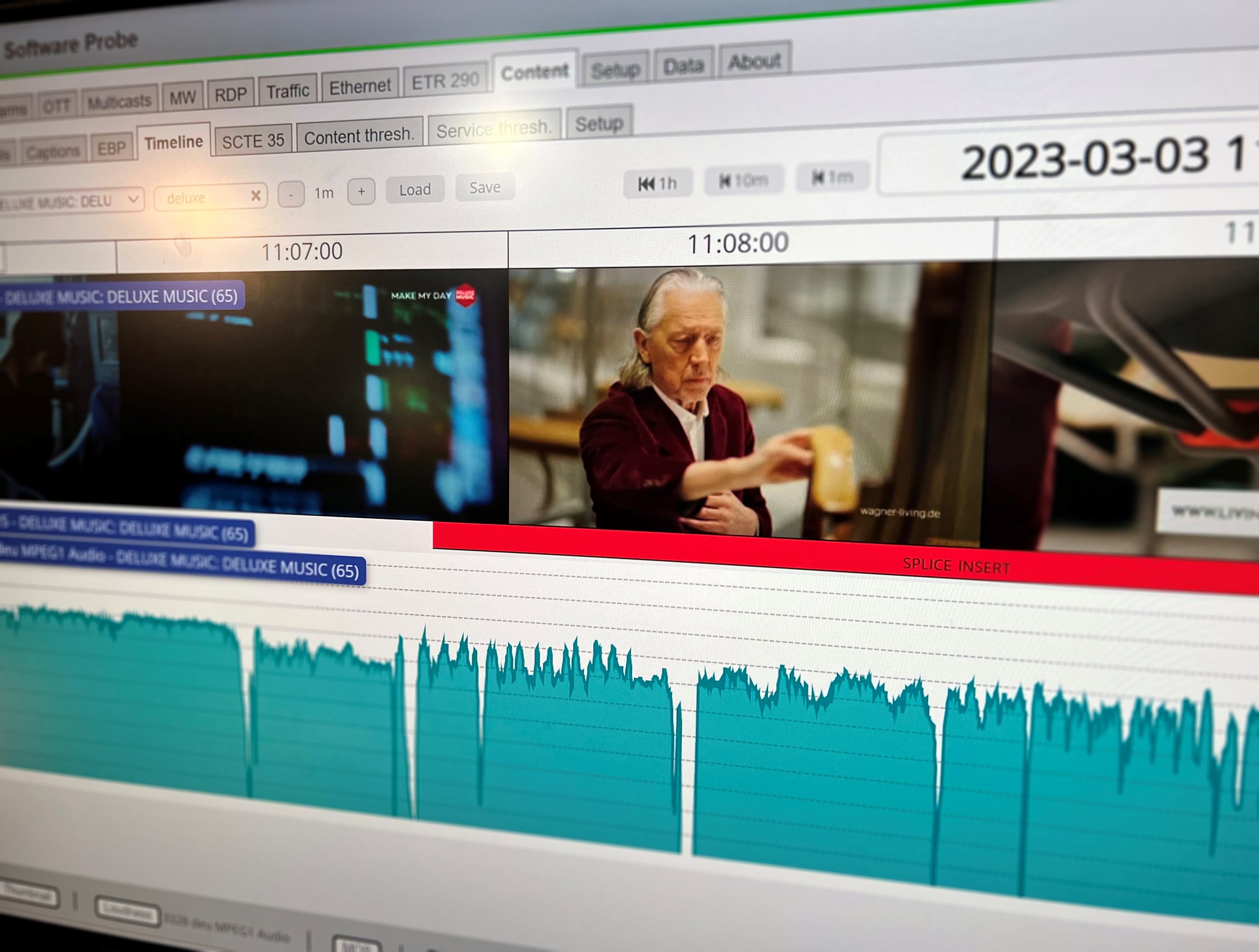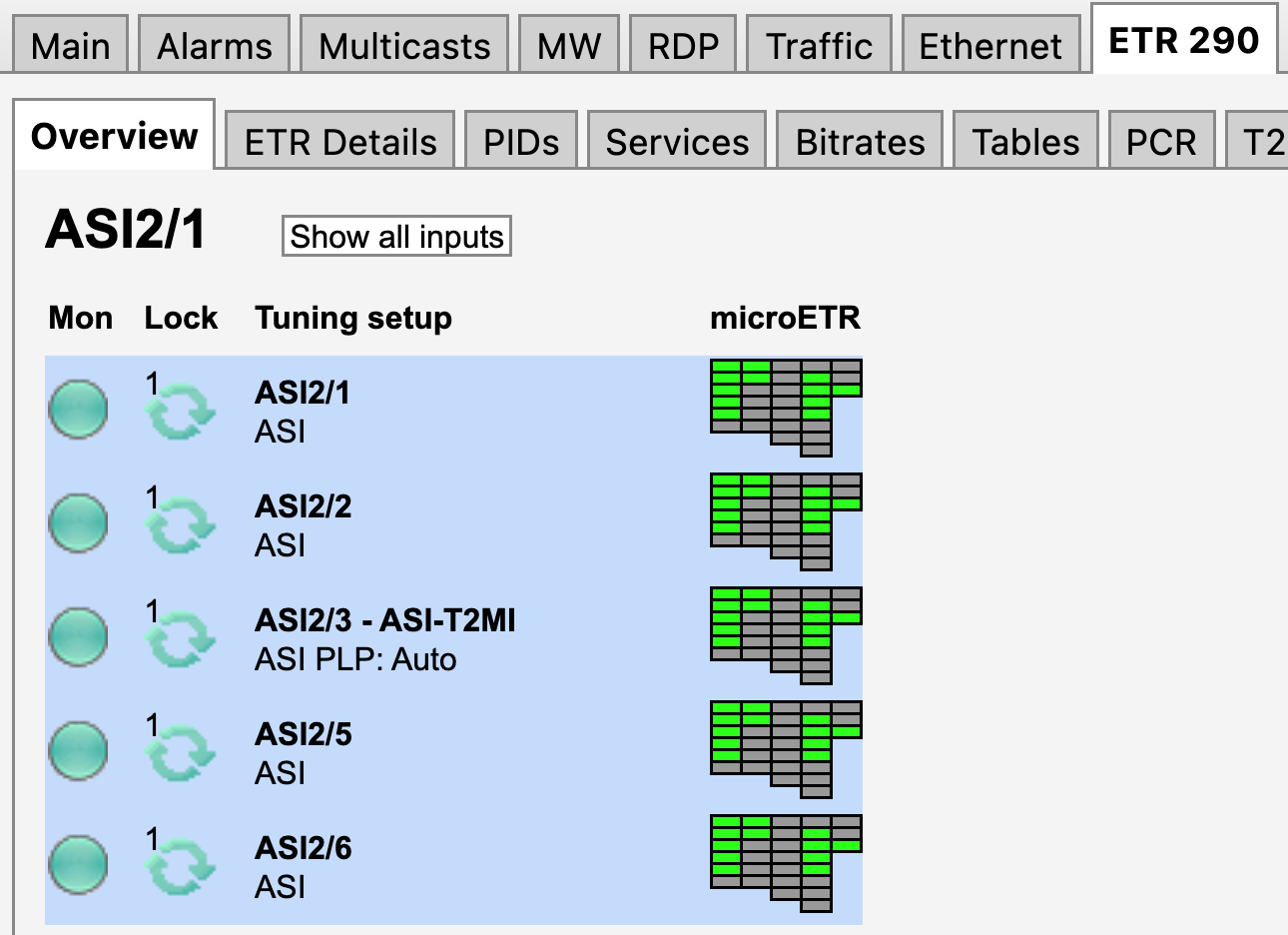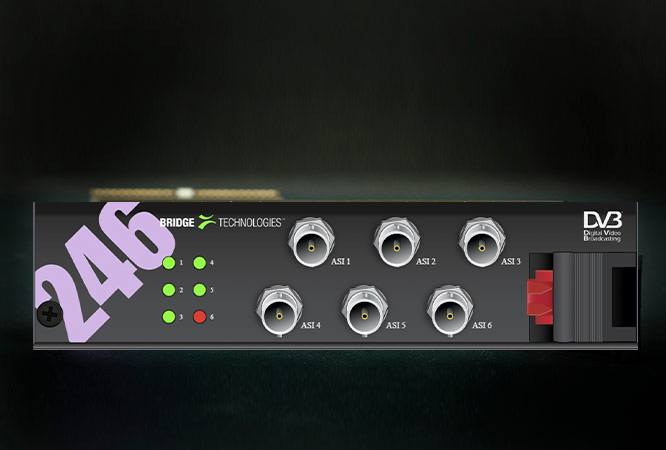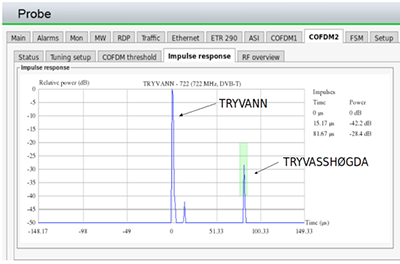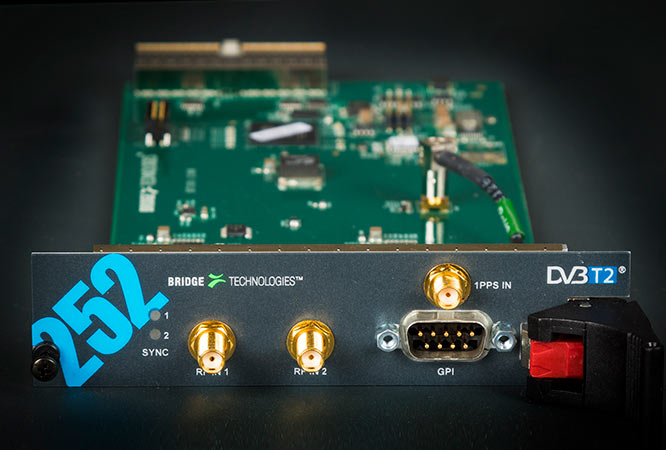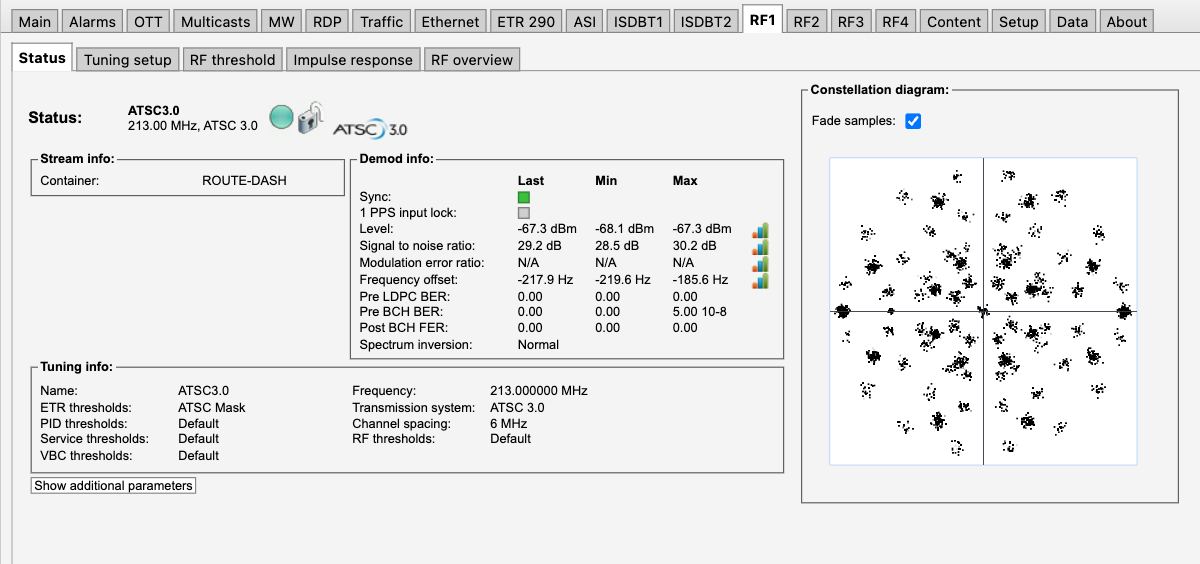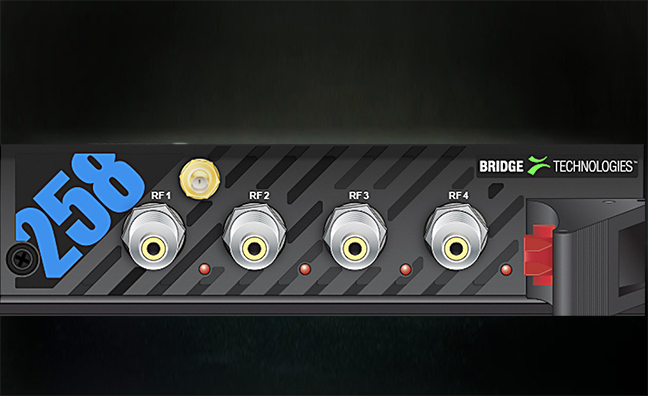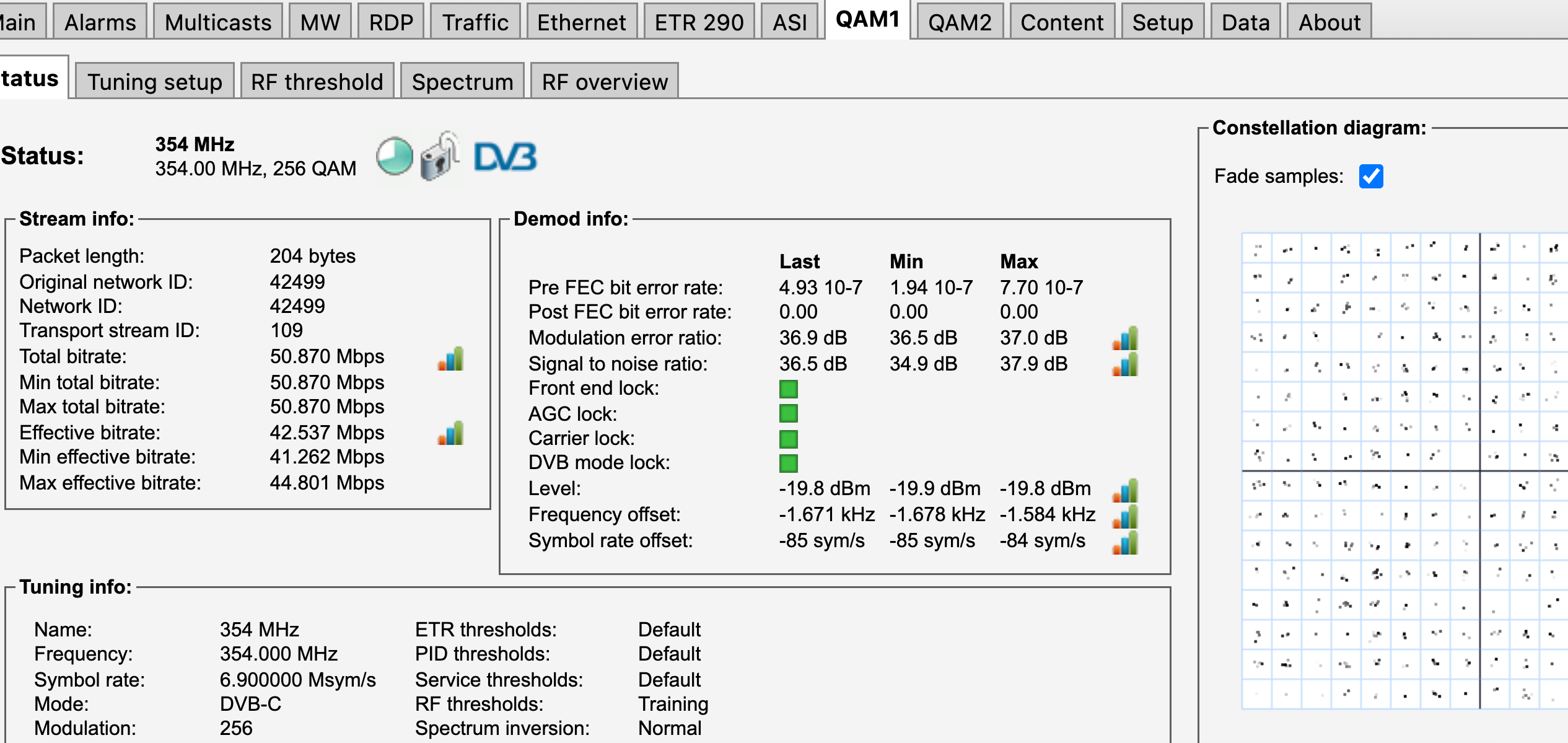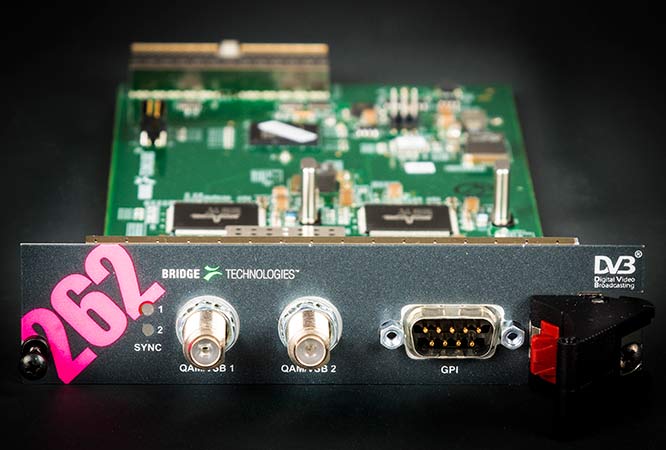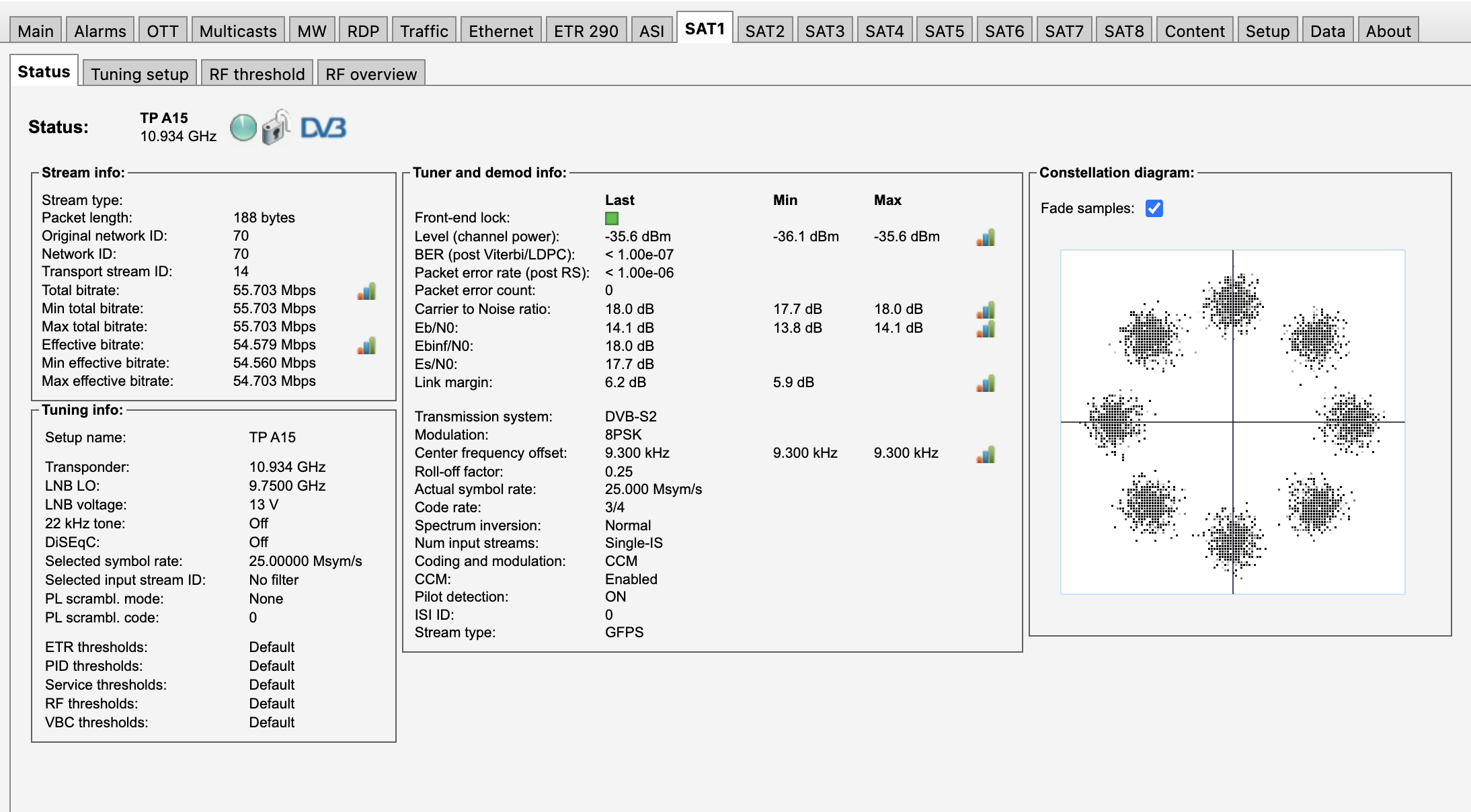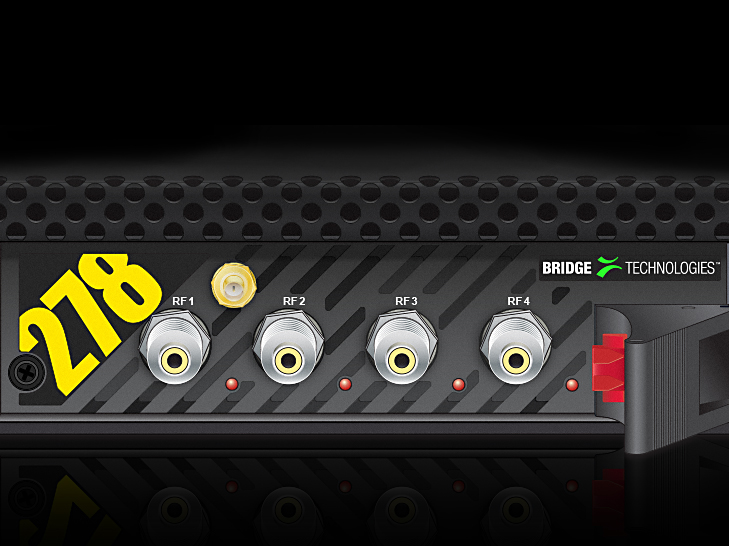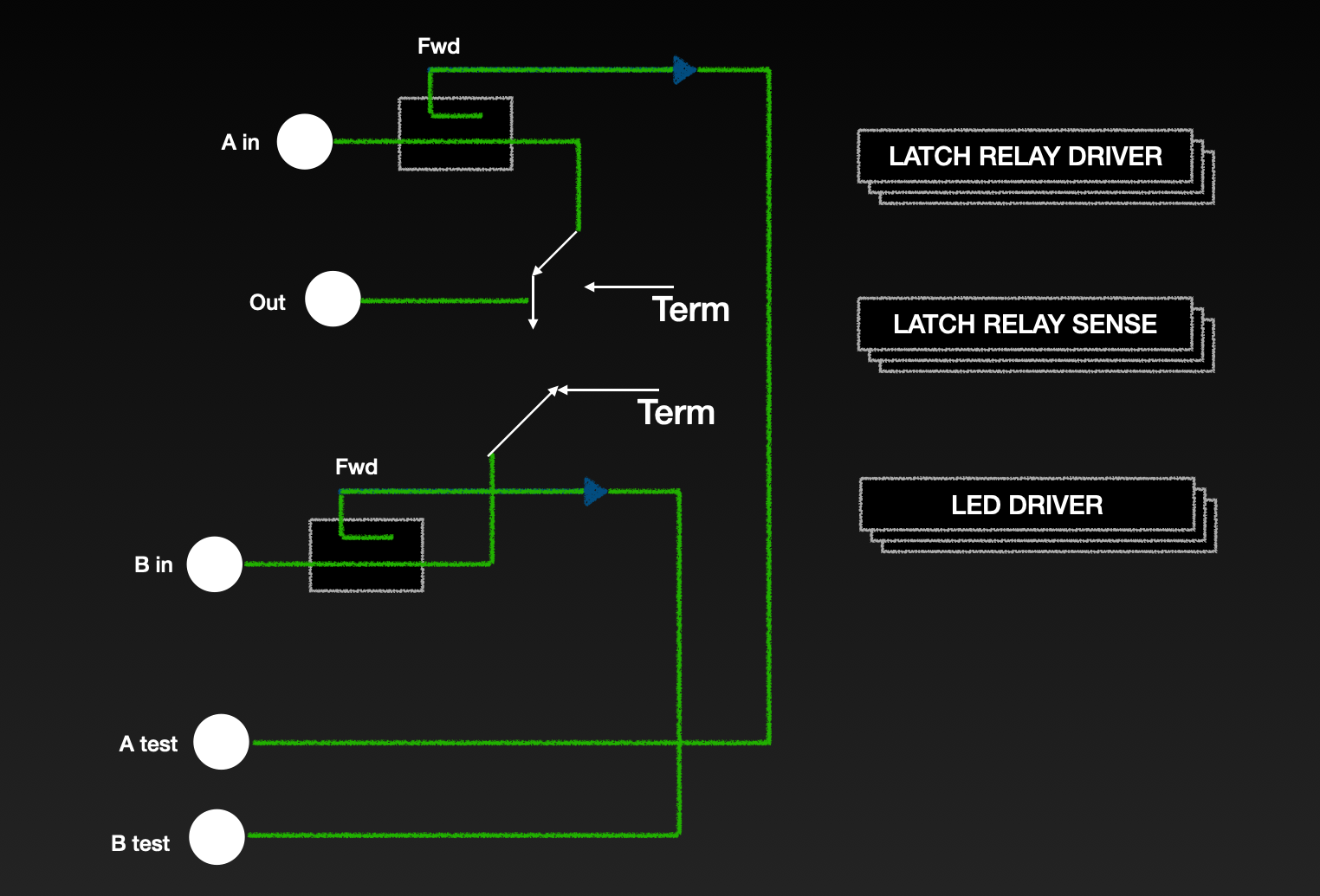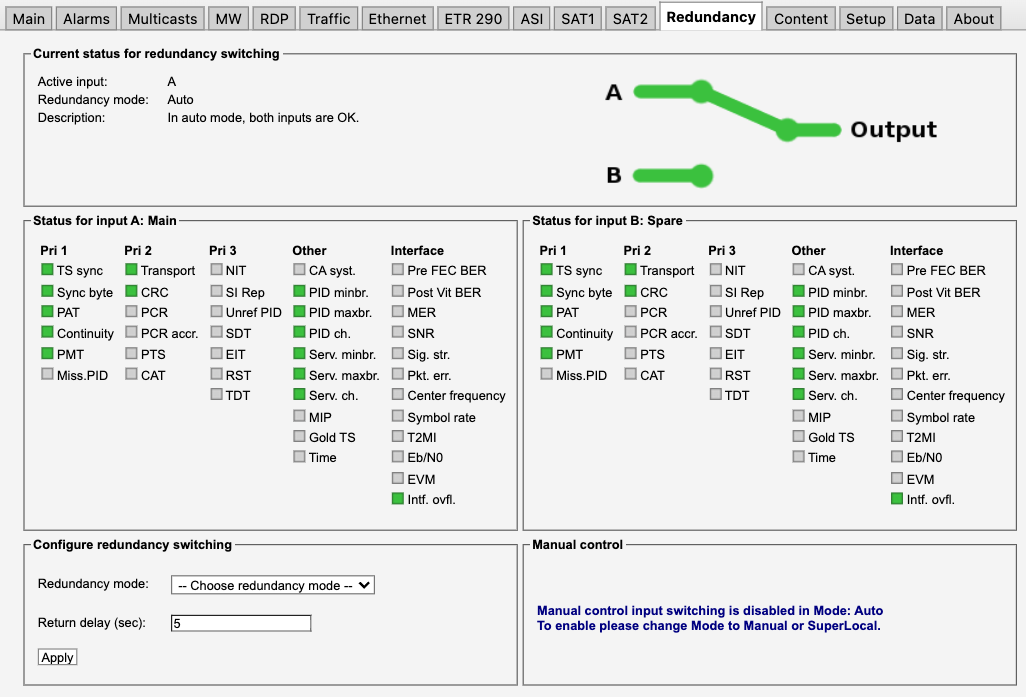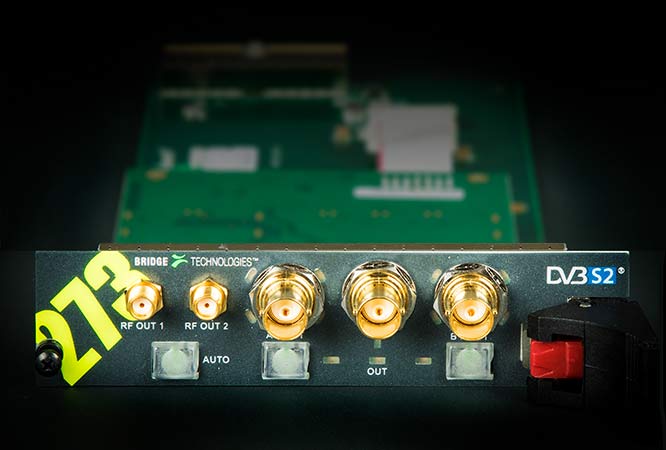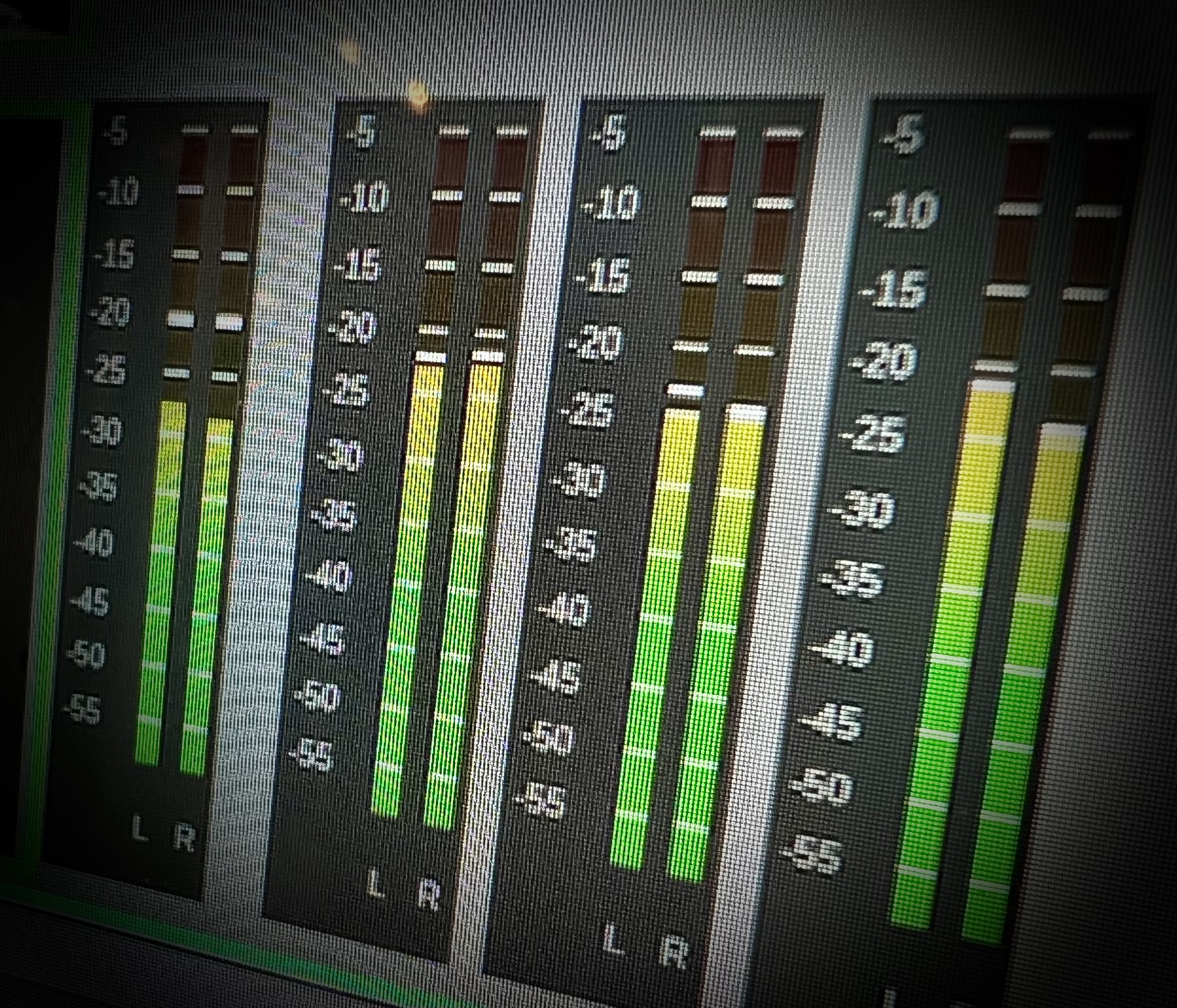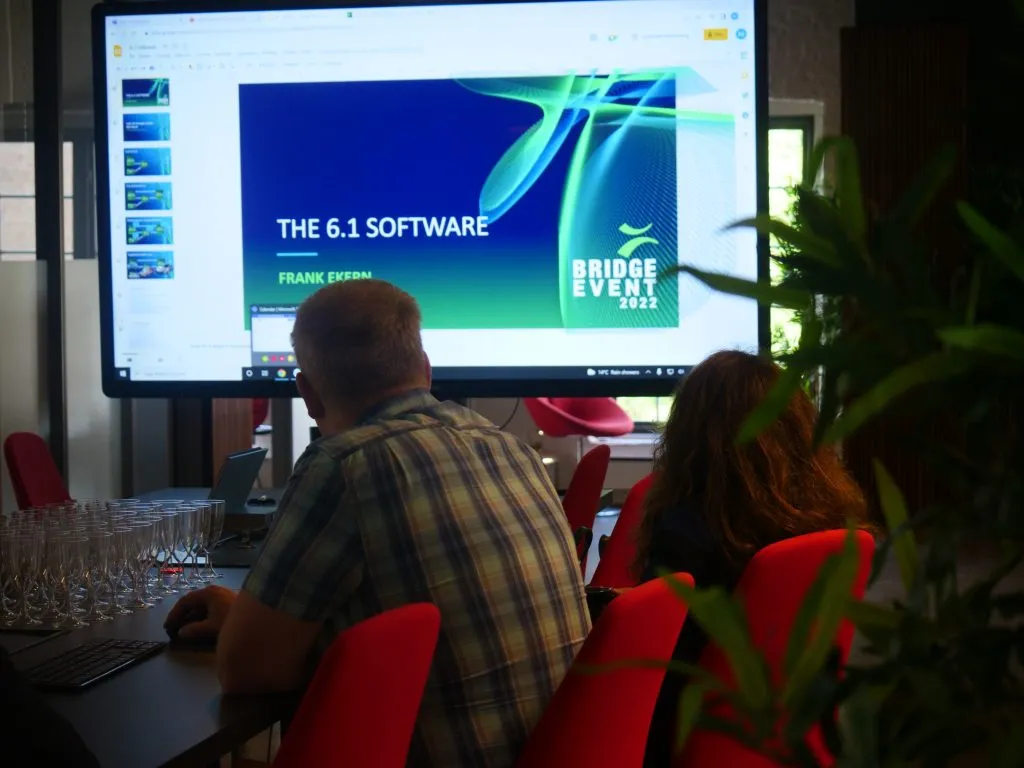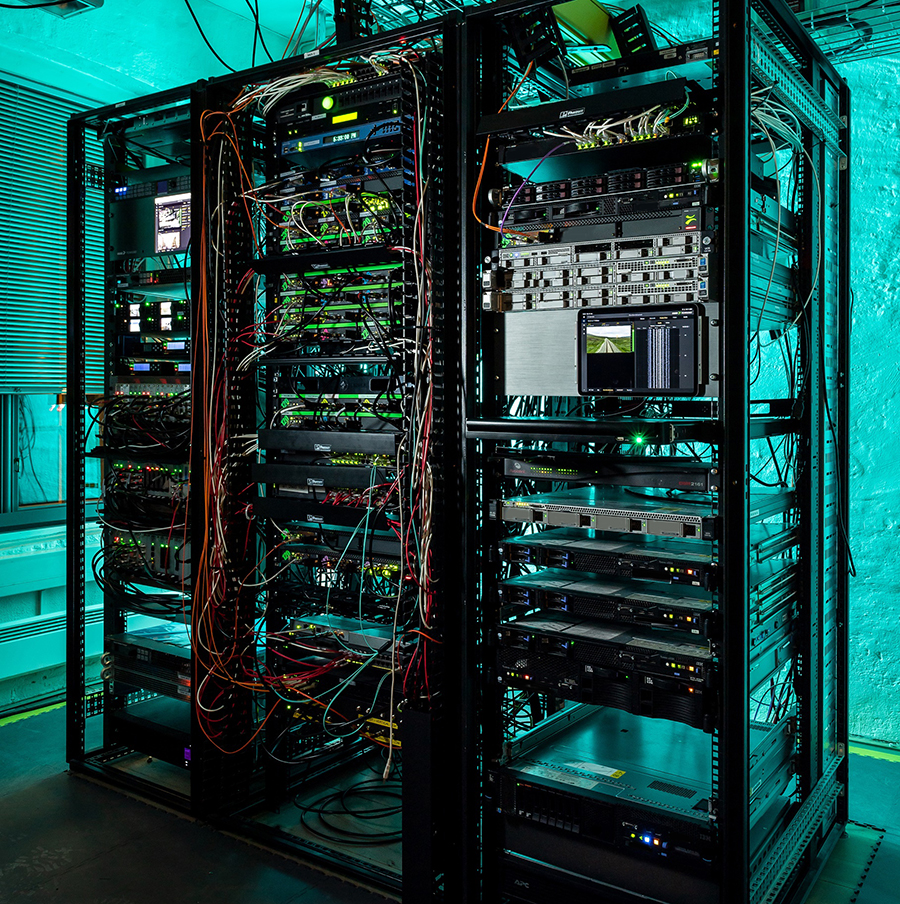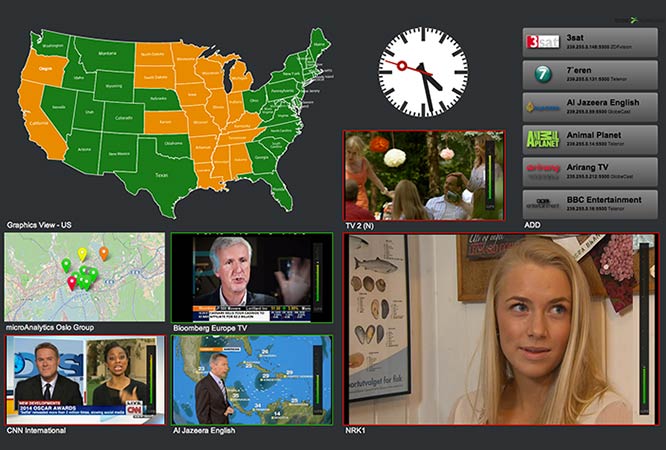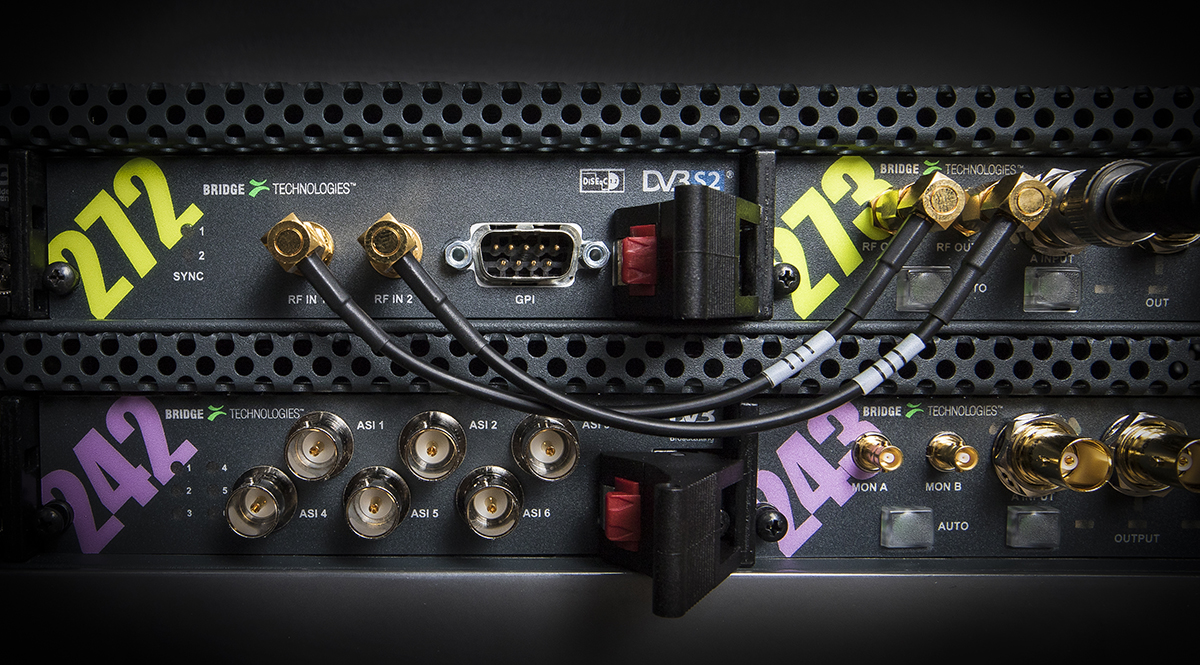KEY FEATURES – VB220 DIGITAL NETWORK PROBE
- 10/100/1000-T RJ45 Management port with Link and Activity LED indicators
- 10/100/1000-T RJ45 video port with Link and Activity LED indicators
- SFP gigE video port with Link and Activity LED indicators
- 75 ohm HD-BNC ASI input port with TS SYNC LED indicator
- 75 ohm HD-BNC ASI output port for monitoring purposes
- 50 ohm SMA female 1PPS input port for GPS synchronisation
- USB Type-A connector for initial setup
- Expansion blades available for common formats such as DVB-S/S2/S2X, DVB-C/QAM-B, DVB-T/T2, ATSC1.0/ATSC3.0, ASI
- 2:1 redundancy switching expansion blades available suitable for terrestrial and satellite systems
- Parallel and continuous monitoring of up to 260 IP unicasts/multicasts according to ETSI TS 102 034
- MPEG2 (SD/HD), H.264/AVC/MPEG-4 AVC (SD/HD/UHD), MPEG-4p10, H.265/HEVC (8 bit, 10 bit, SD/HD/UHD), JPEG-XS, JPEG-2000 all up to 60fps (VB220 software)
- Support for up to 200 concurrent TR 101 290 analysis engines on IP multicast
- Support for monitoring of up to 250 HLS/M-DASH OTT Streams
- MediaWindow™ visualisation technology for trending packet loss, bandwidth and jitter over up to 4 days
- Thumbnail decoding of uni/multicast IP transport streams with audio bars and metadata
- Full Service Monitoring of up to 10 network devices via built-in ICMP and HTTP query agents
- Framework called RDP for relaying any IP or RF/ASI stream monitored to a different IP destination for further analysis
- Support for Secure Reliable Transport (SRT) for transmitting any two streams monitored as part of RDP framework
- Support for Secure Reliable Transport (SRT) for receiving and monitoring up to four streams
- Functionality for record 200MB of the whole or parts of any transport stream monitored (RDP framework)
- Automatic record trigger based on up to 3 configured alarm criteria with pre fill in order to catch fault
- Framework for passive detection of present multicast/unicast streams on the interfaces
- Framework for actively scanning preconfigured multicast ranges for signal presence
- Support for Session Announcement Protocol (SAP) for convenient multicast channel list distribution
- Protocol hierarchy view with bandwidth and packet count statistics for video interface
- Support for ST 2022-7 redundant streams monitoring with differential timing view and accumulated lost packet’s view
- IGMPv2/v3 protocol logging and analysis framework
- Flexible template based alarming system to allow custom configuration of what parameters result in an alarm being generated on a per-TS leve
- History graphs from last 4 days of NoSignal, CC-errors, RTP-drops, RTP-duplicates, RTP-Out-of-order, Total interface bitrate, Monitored bitrate, Ethernet CRC frame errors
- One ETR290 engine automatically activated per RF/ASI input port on interface modules
- IEEE 802.1Q VLAN tagging support
- Microsoft mediaRoom X-bit RTP header extension support
- Alarm on changes to TOS/DSCP and TTL for detection of changes in network prioritization
- Time loss distance measurements according to RFC3357
- Alarm forwarding to 3rd party systems via SNMP TRAP via up to 3 unique destinations
- NTP client time synchronization support according to RFC2030
- DHCP client support on management and video ports according to RFC2131
- Easy web-based software and license upgrade
- Tightly integrated with VideoBRIDGE Controller (VBC)
- XML-based configuration save and retrieval via web
- Powerful and openly available XML-based External Integratoin Interface (Eii) for 3rd party integration
- Gold TS Protection™
- The JPEG-XS option enables monitoring and analysis of the JPEG-XS stream embedded in TS (VB220 software)
- Condensed mosaic thumbnail view of all services monitored



